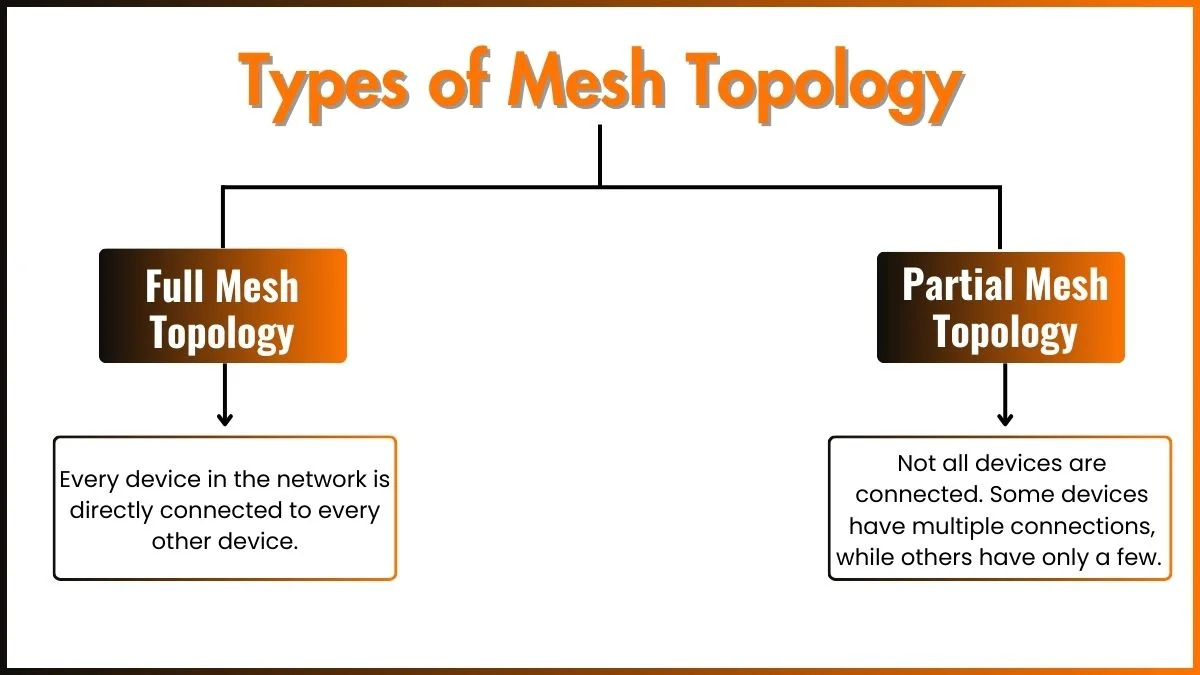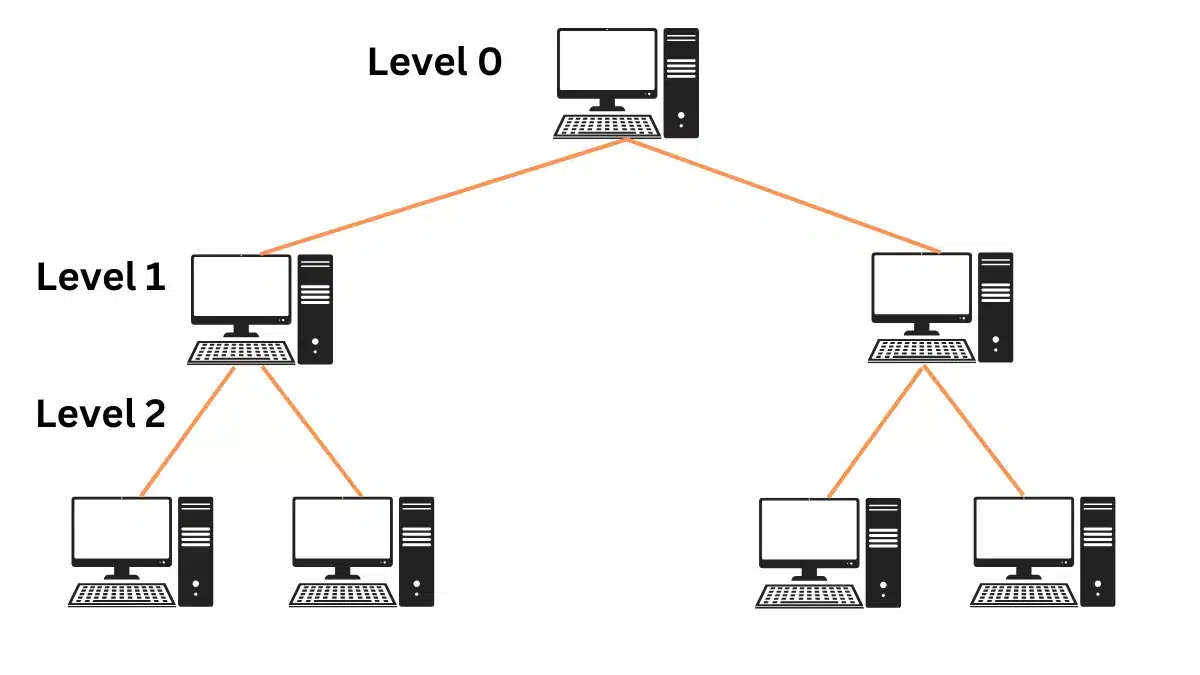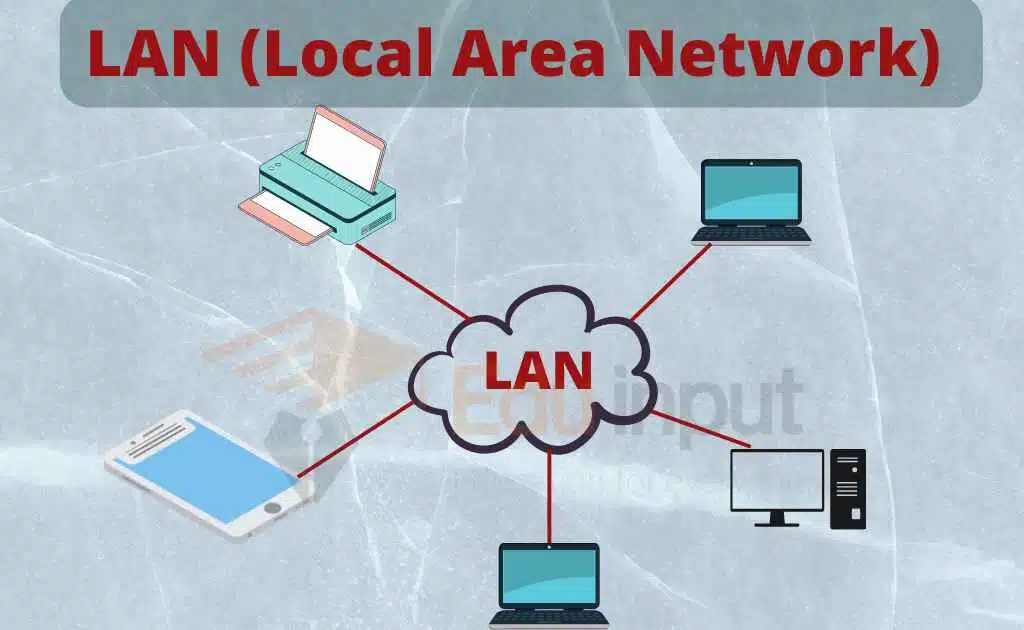Differences Between Partial Mesh and Full Mesh Topology
The main difference between Partial Mesh and Full Mesh Topology lies in their connectivity and complexity. In Partial Mesh, all devices are not directly connected. This makes it cost-effective and scalable but less reliable.
In Full Mesh, every device is interconnected. They ensure high reliability and performance but at a higher cost and complexity.
Partial Mesh and Full Mesh are types of Mesh Topology where Partial Mesh offers cost-effective scalability, while Full Mesh ensures maximum reliability through complete interconnectivity.
Partial Mesh vs Full Mesh Topology
This table highlights the main differences between Partial Mesh and Full Mesh Topology for better understanding:
| Aspect | Partial Mesh Topology | Full Mesh Topology |
| Definition | Not all devices are connected to every other device. | Every device is directly connected to every other device. |
| Connectivity | Limited direct connections. Some devices rely on intermediaries. | Fully interconnected. Every device has a direct link to every other device. |
| Complexity | Less complex. Fewer connections make it easier to design and manage. | Highly complex. Many connections make it challenging to design and maintain. |
| Cost | Lower cost. Fewer cables and hardware are required. | Higher cost. Extensive cabling and hardware are needed. |
| Scalability | More scalable. New devices can be added without connecting to every other device. | Less scalable. Adding new devices increases connections exponentially. |
| Reliability | Less reliable. Single points of failure can disrupt communication. | Highly reliable. No single point of failure. Communication remains intact. |
| Performance | Slower performance for devices relying on intermediaries. | Faster performance. Direct connections minimize delays. |
| Use Cases | Used in large networks (e.g., WANs) where cost and scalability are priorities. | Used in smaller networks (e.g., LANs) where reliability and performance are critical. |
| Fault Tolerance | Lower fault tolerance. The Failure of a central node can disrupt communication. | High fault tolerance. The Failure of one link does not affect overall communication. |
| Data Transmission Speed | Slower due to indirect paths and potential bottlenecks. | Faster due to direct paths and no intermediaries. |
| Maintenance | Easier to maintain due to fewer connections. | Difficult to maintain due to the large number of connections. |
| Network Size Suitability | Suitable for larger networks with many devices. | Suitable for smaller networks with fewer devices. |
| Redundancy | Limited redundancy. Fewer alternate paths for data transmission. | High redundancy. Multiple alternate paths for data transmission. |
| Installation Time | Faster to install due to fewer connections. | Slower to install due to the complexity of connections. |
| Energy Efficiency | More energy-efficient, as fewer connections consume less power. | Less energy-efficient due to the high number of active connections. |
| Real-World Applications | Used in corporate networks, WANs, and large-scale systems. | Used in military networks, financial systems, and small office setups. |







Leave a Reply